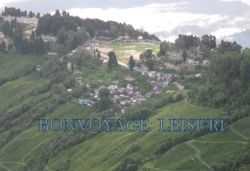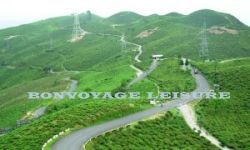 Hills Of Darjeeling Links
Hills Of Darjeeling LinksInformation - History of Darjeeling Tea :
 Tea produces in the hilly areas of Darjeeling hills are called Darjeeling tea. Darjeeling is located at the norterhn tip of West Bengal state. There are around 86 tea gardens which produce Darjeeling tea. Darjeeling tea has been acknowledged the finest tea in the whole world due to its unique flavous which can’t be matched or replicated anywhere in the world.
Tea produces in the hilly areas of Darjeeling hills are called Darjeeling tea. Darjeeling is located at the norterhn tip of West Bengal state. There are around 86 tea gardens which produce Darjeeling tea. Darjeeling tea has been acknowledged the finest tea in the whole world due to its unique flavous which can’t be matched or replicated anywhere in the world.
Darjeeling tea occupies a place of pride for the whole of India. Darjeeling tea industry along with the tourism is the mainstay of economy of the hills. Tea plantation is restricted in Darjeeling and Kurseong sub-divisions only. Kalimpong sub-division is kept away from tea plantation as it has agriculture holding and reserve forest.
Traditionally Darjeeling teas are classified as a type of black tea. However many Darjeeling teas also appear to be a blend of teas Oxidized to level of Green, White and Oolong. But not each garden qualifies to produce Oolong tea in Darjeeling. Following conditions are required to make it. The conditions are – i) At least 3000 ft height from the sea level is required, ii) Old China Bush concentration should cover at least 40% of the total tea growing area, iii ) Clonal type is required at least 25% at high altitude and iv) Average temperature should remain in between 5˚ to 20˚ Centigrade throughout the season.
The cool and moist climate, the soil, the abundant rainfall requires in a year of around 50” to 60” and the sloping terrains – all combine to give Darjeeling tea its unique ‘ Miscatel flavour’ and ‘ Excuisite Banquet’.
The flavours of Darjeeling tea differs from season to season. According to the producing period, the season can be categorized as following – i) Easter Flush ( March – April ) ii) Spring Flush ( May – June ) iii ) Summer Flush ( July – September ) iv) Autumn Flush ( October – November ) v) Winter Months ( December – February ).
Today India is the largest tea producing country in the world. The history of the Indian tea goes long back to early 19th Century. Commercial Tea production started in India by East India Company to break the monopoly of Chinese tea. It was around 1834, when Lord William Bentinc appointed a committee “ to consider the question of importing seeds and plants from China to decide upon the most favourable localities for growing them in India “. 
During 1820s, the British East India Company started large scale tea production in Assam of a tea variety traditionally brewed by the Singhpho tribe. The story of the Darjeeling tea started in the middle of the 19th century when a surgeon named Dr. Cambel transferred to Darjeeling from Kathmandu in Nepal planted tea seeds in his garden at Beechwood, Darjeeling. The British Government also established tea nurseries during 1847 in Lebong near Darjeeling and the commercial production started during the 1850s. The first commercially tea gardens in Darjeeling hills were Makaibari and Aloobari. Immediately after Tukvar, Moodakothi, Dooteriah and Margaret’s Hope were started.
After India’s independence in 1947, many of the British owners, who controlled more than 90% of Darjeeling tea gardens started disposing their properties and left India. By 1960s large number of tea gardens’ ownership changed hands.
In 1892, the Darjeeling Planters Association was formed.
0 min read

 Back to Previous Section
Back to Previous Section